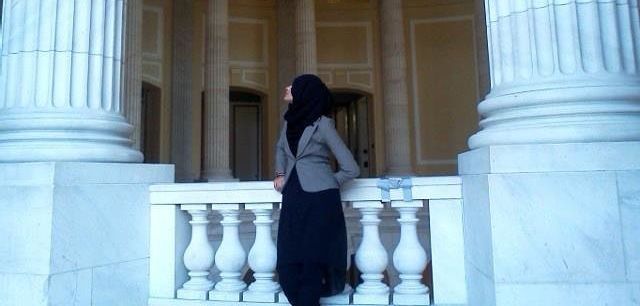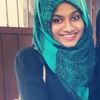
For nearly two decades now, being an American Muslim has come to mean seeing my faith eviscerated in headlines everywhere I go, feeling the eyes of people watching me as the subway conductor announces, “If you see something, say something,” or having people constantly imply that I am “oppressed.”
When I began teaching in the fall of 2016, it was a dream come true, because I had always wanted to be a teacher since I was a kid living in Bangladesh. But back then, I had no idea that when I taught my first class, it would be across the world in a time when America was electing a president who vilifies and seeks to persecute Muslims like me. I certainly couldn’t have imagined that I would be teaching at the heart of a community that overwhelmingly supports this man and his policies.
I started teaching as an adjunct professor in Staten Island amid the chaotic election of 2016, and was blissfully oblivious to the political inclinations of Staten Island residents. But it didn’t take me very long to find out ― as much as 75 percent voted Republican in some South Shore districts. Many of my friends (both Muslims and non-Muslims alike) were concerned for my safety and suggested that I get out of there.
I ended up staying because I did not want to give up on my students. And I realized that for many of the students in this Staten Island community, seeing me up there in front of the class in my hijab and engaging with me all semester long was by far the most interaction they had ever had with a Muslim.
In my desire to teach, I never set out with any political purpose, but social issues are inevitably politicized ― as is my hijab. So when I taught a literature and writing course exploring alienation, prejudice and race, it was seen as politically motivated. It was similar to the right-wing fear that “liberal” professors are supposedly indoctrinating students with “liberal ideology.” It’s why college campuses have currently become a political battleground, and why controversies have arisen about nonpartisan approaches to teaching in these times, although some argue that teaching is inherently political and that educators have a responsibility to teach social justice.
My purpose, more than anything, is to enable students to see from perspectives different from their own. And I believe nowhere is that more possible than through literature and writing. My hope is for my students to challenge established assumptions, to question and critically engage with the world around them no matter what their background or personal beliefs. And that, unfortunately but necessarily, can be uncomfortable at times.
As I tried to navigate teaching during such turbulent times in a politically divisive country, it became more important than ever to me to have a space for dialogue. Despite some of these students seeing me, a Muslim, as the very representation of everything they were against, everything they were supposed to fear and hate, teaching became a conversation, not just between me and my students, but between the students themselves.
“I had no idea that when I taught my first class, it would be across the world in a time when America was electing a president who vilifies and seeks to persecute Muslims like me.”
Despite, or maybe because of, how personal my teaching became that semester for me, I tried to understand why my students thought of me the way they did. I tried to understand them ― my students in this far-flung community tucked away from the legendary diversity of New York City. Many of them come from families of police officers and law enforcement, and thus have been raised with staunch values of security and patriotism ― the very values to which they see people like me as a threat. And I realized the extent to which people can be automatically defensive about anything that seems to challenge their entire value system. If they have been raised their whole lives to see through black-and-white lenses, that is all they know. It is through open dialogue that they may see the gray areas they don’t even know can exist.
But during such divisive times, dialogue cannot happen if we continue to denigrate each other through labels. Wielding “political correctness” to extremes in the name of social justice only silences any chance at dialogue ― and so does dismissing the very real life-and-death systemic oppression of minorities and people of color. When I integrate topics such as race and mass incarceration into my classroom, I don’t do so for the sake of politics, I do so because they involve real, embedded experiences of people’s lives. And to neglect that is to do a disservice to my role in teaching.
We need to talk about police brutality. But let’s also talk about the fact that, in many cases, police are given no choice but to fulfill arrest quotas that determine their job security, increasing the chances they will profile black and brown people. Whatever political side or religion or group, we need to stop silencing each other long enough to listen and to see through the eyes of whatever “enemy” we have been taught to hate and fear.
I had a student that semester whose goal was to join the military, who had staunch military views, and who wrote a successful, cogent paper arguing for the advantages of drone warfare after our class discussions on the topic. As a Muslim, I don’t need to state here my personal views on drones that have killed countless civilians in the “war on terror” in Muslim-majority countries ― but nonetheless, I discussed with my students both advantages (for American soldiers and the lower risk of PTSD, etc.) and disadvantages.
To my surprise, for the final paper, this student chose to switch perspectives and consider the effects and perspective of civilians in the path of drone casualties. He stood in front of the class and explained that he had never before thought about the other side of what drones do to people; that he would be aware of these perspectives when he joined the military, and would strive to make soldiers aware of the consequences of their actions. He was proud of his country and he wanted to protect his country, yet he now also saw through the eyes of those he was taught to see as the enemy.
Of course, I was the very representation of the enemy that my students were confronting. Once, while I was teaching a piece on gender inequality, a student insisted that I could not possibly believe in women’s equality (because of course it makes sense that I am a Muslim woman teaching college kids, and yet believe that women should be “oppressed”). But I began to see other students seemed genuinely curious or surprised at the prospect that I could be something other than what they thought. In those moments, I realized that for many students, my very presence in a hijab had confounded their perceptions of me and what they thought they knew of who Muslim women and Muslims supposedly are.
I teach literature and writing because I believe in their transformative power to breach boundaries. But I did not know that the simple act of standing in front of a classroom in a hijab day after day would enable the very thing I hoped to teach.
In a way, teaching right in the heart of a place that perceives me as something I am not became something more. It became, in ways I could never have imagined, a way of breaking the boundaries, the misconceptions of who I am and what I represent. Despite the difficulties this may come with, I will continue to teach. And I hope that in such a divided America, we can also begin to break the boundaries we’ve constructed in our minds and among ourselves.
Have a compelling first-person story you want to share? Send your story description to pitch@huffpost.com.
